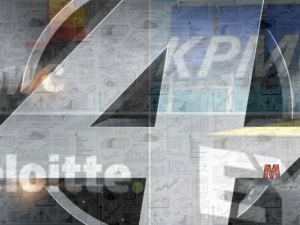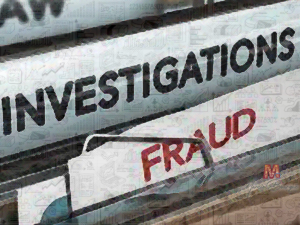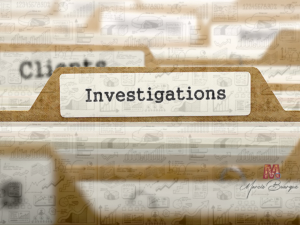
Everything you need to know to avoid requesting something unworkable without practical results.
STEP BY STEP: DUE DILIGENCE
After two weeks of diagnosis and another week of preparing and discussing results with the client, it is time to outline a scope. Diagnosis usually involves carrying out due diligence. The diligence can be financial ones, including a tax review, governance, and controls, and can even cover the area of information technology (IT).
Usually, the situation indicates the need for several practices to work on several fronts, but I understand that this approach is fruitless and too costly. In cases where a large team of specialists is involved, hourly budgets practically triple, raising fees in clubs that typically have serious cash problems.
When classifying the seriousness of the problems identified, it is often noted that those of an accounting, financial, and fiscal nature occupy the reports’ top positions. IT and Governance problems seem irrelevant when compared to financial and fiscal issues.
Moreover, governance and IT solutions require more resources to be disbursed, scarce in crisis times.
There is an argument that governance and IT consultancy subsidize a “management shock.” It is one of the biggest fallacies that consultants invented to sell more services. In practice, they end up drawing new organizational charts and increasing expenses with new hires and indemnities. If the club does not pay much attention, the consultancy indicates professionals who will generate future service demands. The club becomes a cash cow for Big4 and other consultants, using the BGC matrix model’s terminology.
The early implementation of crazy governance plans also increases turnover, which has grave implications for financial diligence execution. It is necessary to remember that a lack of control, a lack of documents, and searching for information will necessarily go through the people who were already in the clubs. During due diligence, coexistence allows for an even more accurate assessment of the club’s internal staff’s degree of engagement and capacity. At the end of the due diligence, you have far more elements to decide whether to discontinue a manager or an employee or not than in any assessment of governance or human resources specialists.
The IT part will depend a lot on what is planned as a future optimum structure. Consultancy work usually starts from a utopian scenario, close to perfection, without overthinking. As a result, it implies spending a lot of money outside the core business. There is time for everything, and I understand that you can improve IT in the future after making many other financial and administrative adjustments.
And what would be, in general, the scope of financial and fiscal diligence? It can vary widely depending on the characteristics and peculiarities of a club. However, we can list procedures common to any diligence already carried out at several clubs.
The consultant will review the club’s accounting. All large groups of balance sheet accounts have undergone some verification, very similar to analytical procedures applied in an audit.
The great advantage is that since it is not an audit, you can work with non-random samples, focusing on diagnosed problems and preliminary results. It gives much more flexibility and results in a much more helpful product for the club. Every balance will be breakdown, and explained, and the problems identified are addressed and discussed, something that you do not find in annual or quarterly balance notes. In the income and expenses, thorough work is performed, much more profound than any audit.
You end up having access to almost all the relevant contracts and cross payments, validate provisions, and raise unregistered liabilities. In short, you have freedom of action without the implication of exemptions in audit opinions. There is no audit opinion at all! The work is focused on supporting the decision process of club management.
There is also an exhaustive process of confirming balances. We try to ensure almost everything possible. It is much broader than in an audit, and in the absence of answers, other procedures applied to end up helping to tie everything together. This part of the due diligence will mainly feed the litigation.
Financial transactions are also analyzed with a magnifying glass. Such an analysis does not happen with this level of rigor in an audit. This analysis finds omitted liabilities, missing contracts, non-compliant payments, miscellaneous payments, irregular payments, etc. None of this is the objective of an annual audit. Due diligence is far more helpful than audits.
These listed procedures help form a good idea of a club’s actual liabilities, remembering the previously explained limitations. Cash flow gains more predictability, and you start to have elements to design a restructuring process.
Due diligence will also show you in what areas you lose money. It is essential to outline the restructuring strategy.
There is a very particular chapter in club financial due diligence that deserves much attention: reviewing player transactions. It is executed to help form a genuine photograph of your assets, liabilities, and contingencies, determine all the transactions’ costs, and show you whether this process is profitable or not. It is a subject that deserves a larger thread than this. But the transaction review serves mainly as a hook for one of the future phases that I will describe here: that of investigation.
Equity items are also reviewed. To be quite frank with you, this is done to identify unproperly capitalizations in items of property, plant, equipment, and intangible assets. One of the most sordid ways to create profit in insolvent clubs is to improperly record expenses as assets, register assets that do not exist, reevaluate them, etc.
I left the tax review last, as it works as a cake recipe for any type of organization being diligent. In Brazilian football, tax consultants are even lucky, as multiple recovering programs consolidate public debts from time to time. The consolidations end up significantly reducing the revision volume. On the other hand, the social security and labor part is a nightmare. Non-compliance is standard. The lack of payments too. The claims are as diverse as possible, and there is still an eternal discussion about labor regimes.
Tax review is essential. Besides, to help you record your debts, it will create a pipeline of potential contingencies, the famous hidden liability of each club. Liability management is essential in a restructuring process.
TERMS OF USE
This work is licensed under a Creative Commons Attribution-NonCommercial-ShareAlike 4.0 International License.This is not a Free Culture License.



